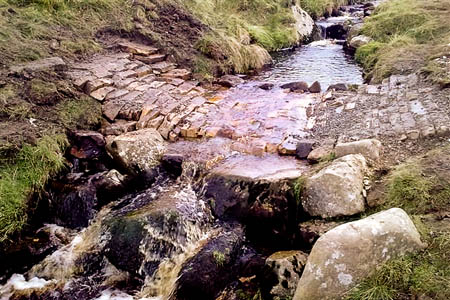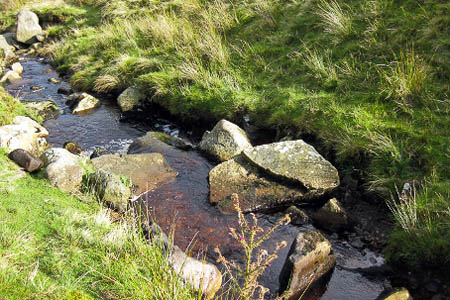Walkers, mountain bikers and horseriders will find a Dales route easier going after a group of drystone wallers built a cobbled ford across a beck.
Visitors to Arkleside Gill in Coverdale, North Yorkshire, will find a firmer footing at the site thanks to a joint project between the Otley & Yorkshire Dales branch of the Dry Stone Walling Association and the Yorkshire Dales National Park Authority.
Members took three days to build a 2m-wide crossing at the site on Arkleside Moor, between Coverdale and Nidderdale.
It was the group’s second project in the national park. Last year, members built an arched bridge over Eller Beck in Wensleydale.
Branch spokesman John Heslegrave said: “Arkleside Gill is steeply-sided and crossed by a bridleway but riders of even the most athletic horses had found the boulder-strewn stream bed too hard-going for a safe crossing.
“A cobbled ford was to be the answer and, after our success in building the Ballowfield bridge over water, we were in line for laying stone under water.”
He said the ford presented a new challenge for the wallers. “Walling with a strong current washing around every stone was a new experience and we were glad to be able to get above the water level eventually,” he added.
Paul Sheehan, the authority’s access ranger for Lower Wensleydale, said: “It was certainly something out of the ordinary for the wallers.
“But they have made a fantastic job of it and it will be there for years to come, helping people to cross the beck and continue their journey in this beautiful part of the national park.”
Mr Sheehan organised the transportation of five tonnes of stone, mostly slabs of freshly quarried sandstone, aggregate and sand bags so the work could be carried out.
The stones were set with the water flow and some of the water was diverted so the first cobbles could be laid ‘end down’ against a sandbagged plank. A suspended rope was used to form the profile for the stonework and soil from the banks was dug out so the cobbles could rise smoothly for pedestrians, cyclists and horses.
Other boulders formed some new steps for the path up the west bank.
Malcolm Petyt, the authority’s member champion for recreational management, said: “Having joined our Dales Volunteers on a few walling jobs, I know some of the challenges of this sort of work. Having to do it under water must be something else! They have done a great job.”

